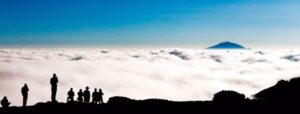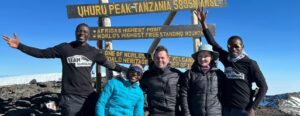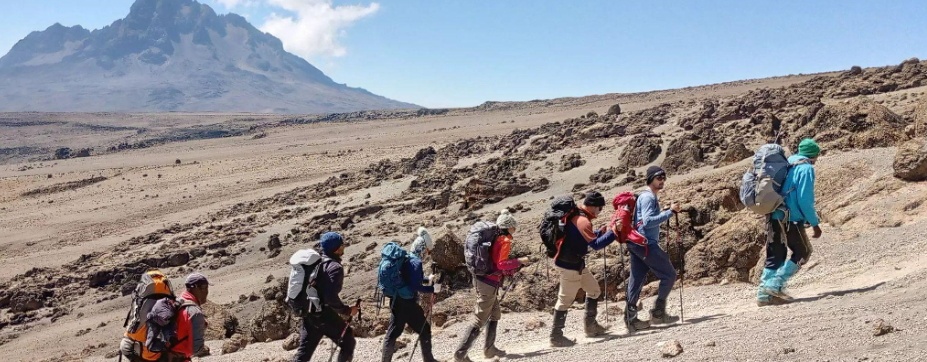Few places on Earth combine accessibility and awe quite like Mount Kilimanjaro. Rising 5,895 metres above northern Tanzania, it’s Africa’s highest mountain — and, remarkably, one that can be climbed without ropes or technical gear.
For some, it’s a bucket-list challenge. For others, a personal pilgrimage. For many more, it’s the first true reminder that human endurance is about far more than strength. To climb Kilimanjaro is to discover the quiet discipline of pacing, planning, and perspective
The World’s Most Democratic Mountain
Unlike Everest or Denali, Kilimanjaro invites almost anyone willing to prepare. You don’t need to be a mountaineer — just healthy, determined, and willing to learn patience.
The mountain rises from farmland to forest, through moorland and desert, before reaching a frozen summit that seems to belong to another planet. It’s a walk through the world’s climates — and through your own limits.
Yet beneath its openness lies a lesson: success demands structure.
The Question of Time
One of the first questions climbers ask is how long does it take to climb Kilimanjaro. The short answer: anywhere between five and nine days. The longer answer: it depends how well you want to succeed.
Fast ascents are possible — and frequently regretted. Altitude sickness doesn’t respect enthusiasm. The body needs time to adapt, generating more red blood cells as oxygen levels drop.
For most, the sweet spot is seven to nine days: long enough to acclimatise, short enough to stay focused. As every veteran climber learns, slowness isn’t failure. It’s strategy.
Choosing the Right Route
Kilimanjaro has several official routes, each with a unique rhythm and terrain profile. The most famous — Machame, Marangu, and Umbwe — are popular but imperfect, with steep gradients and one stretch that climbs 401 metres only to lose it again in the Karanga Valley.
Team Kilimanjaro’s TK Lemosho Route has quietly become the gold standard. It begins on the quieter western slopes, winding through rainforest and alpine desert before joining the northern circuit toward the summit. The approach is gradual, scenic, and sustainable — balancing solitude with safety.
Those seeking a rare, high-altitude experience can add the “Excel Extension,” spending a night inside the crater at 5,729 metres. It’s physically demanding but unforgettable — sleeping above the clouds beside ancient ice.
When to Climb
The best time to climb Kilimanjaro depends on weather and preference.
The dry seasons — January to early March and June to October — offer stable weather, crisp air, and clear views across Tanzania and Kenya. These are the high-traffic months for a reason: conditions are excellent, and summit success rates are highest.
But the quieter “rainy” months — April to May and November — have their own rewards. The mountain is lush, peaceful, and atmospheric. For introspective travellers, mist and solitude make every step feel personal.
Kilimanjaro rewards those who know themselves: some crave sunshine, others silence.

Building the Right Support System
Although the climb requires no technical skills, it does demand logistics. Park regulations require every trekker to hire a licensed guide. Teams of porters carry equipment and food, while cooks prepare hot meals at each camp.
The quality of that support determines both safety and experience.
Team Kilimanjaro, a long-established and highly regarded operator, has refined its logistics into seven “support series” tailored to different climbing styles.
Roughly 70% of climbers choose the Advantage Series, which includes freshly prepared food, mess tents, private toilets, and dedicated crew. For those who want independence and minimal gear, the Superlite Series allows climbers to move fast and light without compromising safety. And at the top end, the Hemingway Series provides a truly VIP experience — comfort and refinement at altitude.
Each system delivers the same outcome through different philosophies: efficiency, adaptation, and care.
The Night That Tests Everything
Every Kilimanjaro story has a defining moment: summit night.
It begins around midnight, after a few hours’ rest at base camp. The air is thin — about half the oxygen of sea level. Temperatures drop below freezing. Headlamps stretch in a line up the slope, moving slowly, steadily, step by step.
This is where the climb becomes mental. You stop thinking about altitude or distance. It’s about rhythm: breathe, step, repeat.

And then, just before dawn, the horizon ignites. The glaciers glow pink, the plains turn gold, and you reach the sign at Uhuru Peak — “freedom” in Swahili. It’s quiet, cold, and astonishingly peaceful.
For a moment, the world below feels distant. Everything noisy and urgent suddenly small.
The Descent and the Lesson
Descending is easier but just as important. The body readjusts, the air thickens, the forest returns. The noise of life creeps back in — but the climber is different.
Many celebrate with a safari in the Serengeti or rest days on Zanzibar’s beaches. Others simply head home, carrying new calm and confidence.
Kilimanjaro doesn’t just change your altitude. It changes your attitude.
Why This Mountain Matters
In a world chasing efficiency, Kilimanjaro reminds us that endurance still matters. It proves that achievement isn’t just about speed or strength — it’s about balance, timing, and respect for systems greater than ourselves.
It’s a mirror for modern life: how we plan, how we recover, how we adapt. And it’s an antidote to distraction — a week of purpose where every movement counts and every sunrise feels earned.
For some, that’s the greatest gift: rediscovering clarity in a world that rarely pauses.
As you descend, you realise that the real summit isn’t the sign at Uhuru Peak. It’s the silence you bring home — the understanding that patience, preparation, and humility always rise higher than pride.

